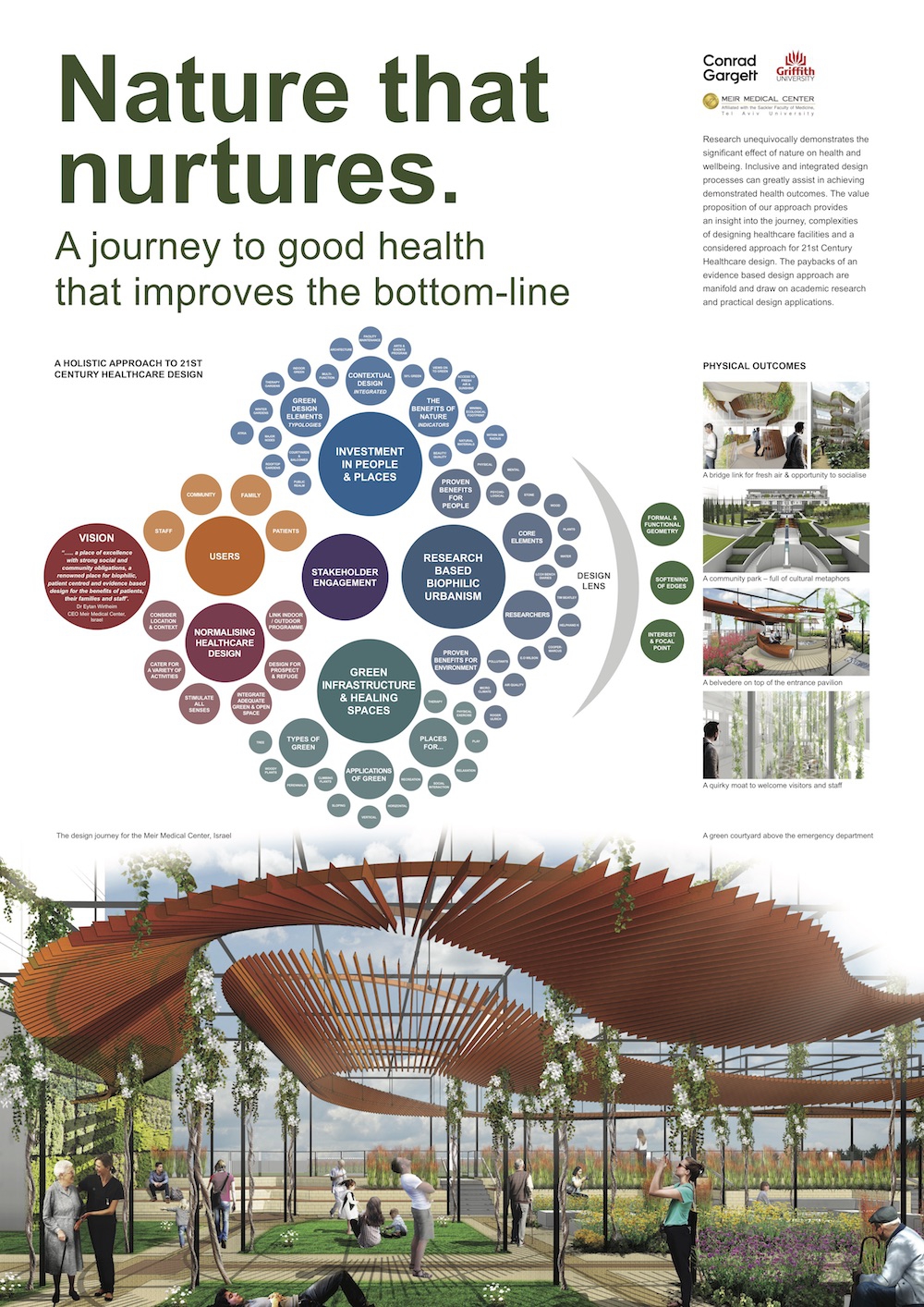Healthcare / Access to nature
European Healthcare Design 2018
Nature that nurtures: a journey to good health that improves the bottom line
By Rebecca Moore, Katharina Nieberler-Walker and Cheryl Desha | 08 Jun 2018 | 0
The latest theory, research and literature call for a holistic consideration and approach to design for healthcare facilities that include the body, mind and environment. Research over the last decade has demonstrated benefits of such an approach and this paper will draw on these, along with relevant theories and practical applications.
Abstract
Nature that nurtures: a journey to good health that improves the bottom line
Today’s design practitioners are committed to advancing global healthcare through visionary design and architecture, shaping restorative environments that nurture health and wellness. Evidence-based designs should be grounded in continuous research and design thinking, pursuing a deep understanding of client contexts and aspirations, and empathising with the human needs of patients, families and healthcare professionals. This includes considering how environmental elements work together to accommodate and enhance the diverse experiences of those who receive and provide care.
The overarching goal is to design places that facilitate world-class patient care for enduring health outcomes. This includes creating welcoming places that accommodate guests’ physical and emotional needs by balancing private areas for respite and reflection, with opportunities for social interaction and community engagement. It incorporates inspiring and productive environments that promote the delivery of state-of-the-art treatment. Therapeutic settings are informed by biophilic design, interweaving nature to improve human healing. Sustainable structures have built-in flexibility to evolve and adapt to the dynamic healthcare sector and emerging 21st-century challenges.
Purpose: The latest theory, research and literature call for a holistic consideration and approach to design for healthcare facilities that include the body, mind and environment. Research over the last decade has demonstrated benefits of such an approach and this paper will draw on these, along with relevant theories and practical applications. The paper will also discuss the merits of an integrated design approach, underpinned by research, in creating an attractive value proposition for clients.
Methods: Beyond the theory, this paper will use exemplar Australasian healthcare projects to illustrate the application and outcomes of such an approach and the social, financial and environmental benefits that can be achieved for patients, their families, staff, and the broader community. The paybacks of an evidence-based design approach are manifold and draw on academic research and practical design applications. This paper seeks to illustrate such an approach by using exemplar projects to provide insight into the approach and complexity of such an endeavour.
Results: From our experience, inclusive and integrated design processes can greatly assist in achieving demonstrated health outcomes. This paper will explore the challenges and opportunities of inclusive design and our experience in conducting such stakeholder engagements for major hospitals in the Australasia region. Furthermore, new technology such as parametric design and virtual reality simulation can greatly assist in demonstrating efficiencies and positive outcomes from stakeholder engagements.
Conclusion: In conclusion, the value proposition for our approach is to provide insight into the journey and complexities of designing healthcare facilities for the 21st century. It will nudge critical design thinking and show a way forward for the design of an environment conducive for both the wellbeing and health of people and the environment.
Organisations involved


